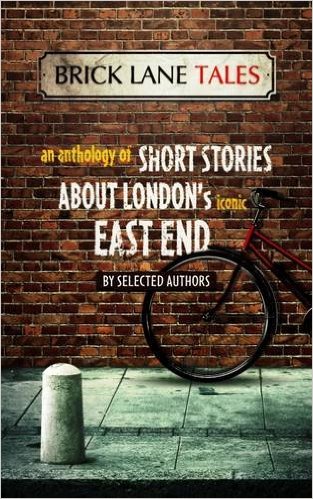There’s no better feeling for a writer than the day the postman arrives with a copy of your work. Not an intangible e-product but the real thing – bound paper you can see, smell, touch. We can all publish on the interweb but this is what makes the countless hours labouring over a hot keyboard worthwhile.
In this case, the work is a short story in Brick Lane Publishing’s excellent anthology, “Brick Lane Tales: an anthology of short stories about London’s iconic East End.” And it’s true that after many long years in the doldrums and association with slums and poverty, the East End is bright, vibrant, gentrified and more fascinating than ever, the Docklands shorn of its stevedores but resplendent in tall, shiny buildings and the new wealth of commerce.
You can write about the history of the place, its rich multicultural heritage, the markets and the slums; see the food – the stereotype is dominated by curries and beigels but for sheer variety walk through Stoke Newington and see how many fashionable bistros you can spot; look at the rag trade of the past and the sari shops of the present – and so much more; but ultimately it is the people and their interaction with the East End that make it such a vivid location.
My story, Take The Long Way Home, is about a man with a fascinating career and an aversion to his home town, such that London is a bit-part character in his internal narrative – not an East Ender though certainly a barrow boy with a bittersweet allegiance with East End culture contrasting sharply with his executive professional life.
I was fascinated to see how characters in other stories published in the anthology collide with the location. What delights me is that they are so radically unique and different in their backgrounds and aspirations, a mile from the working class, religious and racial stereotypes you’ll find in a certain soap opera, for example. These people are very three-dimensional, even when we only glimpse their lives in the confined space of very short stories.
Perhaps my favourite of these mild eccentrics is Miss Isobel Beauregard in Margaret Crompton’s Belle’s Bows, particularly her relationship with the evolving Cygnet Court: old life dying, new life springing forth, a perfect metaphor for the East End!
Read and enjoy. I hope you will share my view that we need many more stories from these authors about the East End and much more besides, but credit to Brick Lane Publishing for keeping alive the role of the East End in fiction.

